Jump to:
Wondering how to get thicker hair? You’re in the right place. The guide below covers the steps to take, things to consider, and more. Read on to learn all you need to know to get the luscious, thick hair you’ve dreamed of.
How to Get Thicker Hair in 7 Easy Steps
The key to getting thick, lush hair is to encourage the scalp and hair follicles to produce stronger, thicker, healthier hair. You can also style your hair in ways that make it look and feel thicker.
In summary, the steps you’ll need to follow include:
- Strengthen your hair from the inside
- Care for your scalp
- Keep your hair trimmed
- Try a natural hair mask
- Minimize heat styling
- Brush your hair frequently
- Choose hair care products carefully
Of course, this is just the summary — be sure to read the steps in greater detail below. We’ll cover things to consider, common mistakes to avoid, and how to get thicker hair naturally.
Step 1: Strengthen Hair From the Inside Out

ivector/Shutterstock
You may already know that technically, the hair that we see is dead. The cells in the shaft of each strand of hair are no longer living. But the root of the hair is alive, and it’s fed by tiny blood vessels that keep it growing. The phases of hair growth include:
- Anagen: The active phase
- Catagen: The transitional phase
- Telogen: The resting phase
When we write about strengthening hair from the inside out, we mean that we want to optimize conditions for hair follicles, so they can produce the best product possible — your new, thick luscious hair. of course. We need the sebaceous gland to continue producing sebum, conditioning and lubricating the hair and skin. We want the hair growth cycle, especially the anagen phase, to continue so the hair appears thick and plentiful.
Step 1(a): Manage Any Health Conditions That Affect Hair

Rawpixel.com/Shutterstock
There are some chronic health conditions that can affect how your hair grows. Obviously, there are plenty of other reasons to manage your health proactively, but helping your hair grow in thick and healthy is definitely a benefit as well.
Conditions that affect the hair include anemia, diabetes, fungal infections, lupus, stress, thyroid disorders, and hormonal changes such as pregnancy, childbirth, menopause, and starting or stopping hormonal contraception.
Step 1(b): Eat Foods That Promote Hair Health
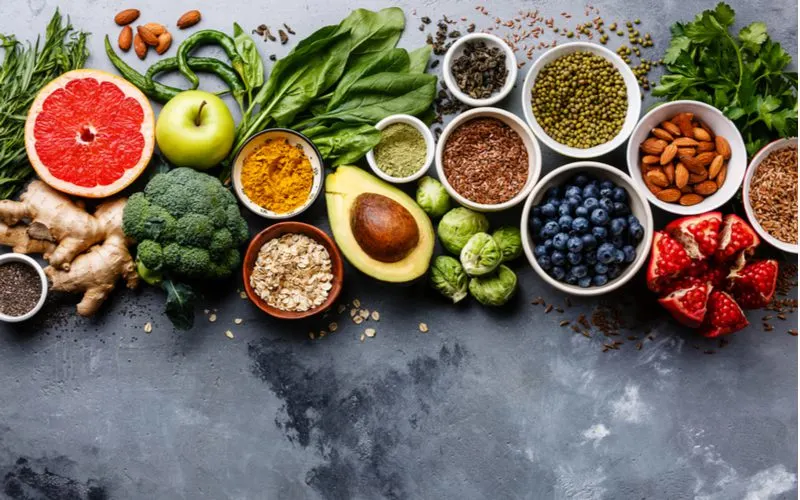
Natalia Lisovskaya/Shutterstock
There are a number of foods that are rich in vitamins, which naturally promote hair growth. Some of the foods that help keep your hair follicles strong and healthy include:
- Greek Yogurt: Greek yogurt contains Vitamin B5 (pantothenic acid), which helps increase blood flow to the scalp and minimizes hair thinning and hair loss.
- Avocadoes: Avocadoes are high in Vitamin E, which helps promote hair growth, and they contain essential fatty acids. A lack of essential fatty acids can lead to hair loss.
- Soybeans: Soybeans contain the compound spermidine, which may extend the anagen phase of hair growth. In vitro studies have shown that spermidine promotes the growth of healthy human hair.
- Sweet Potatoes: Sweet potatoes are high in the antioxidant beta-carotene, which encourages sebum production and helps protect against dry hair.
- Eggs: Eggs are high in biotin. A lack of biotin can lead to hair loss.
- Mango: Mangoes contain silica, a building block of connective tissue that helps strengthen hair and accelerates hair growth.
- Salmon (and other fatty fish): These are a prime source of Omega-3 fatty acids, which the body needs for many things, including hair growth.
- Berries: The antioxidants and other compounds in berries help protect hair follicles, and Vitamin C increases collagen production. Collagen is a protein that helps strengthen hair.
- Cinnamon: This promotes blood flow and circulation, providing nutrients and oxygen to hair follicles.
- Spinach (and other leafy greens): These contain Vitamin A, iron, and folate, which help keep your scalp healthy and your hair moisturized.
Step 1(c): Take Supplements That Encourage Hair Growth
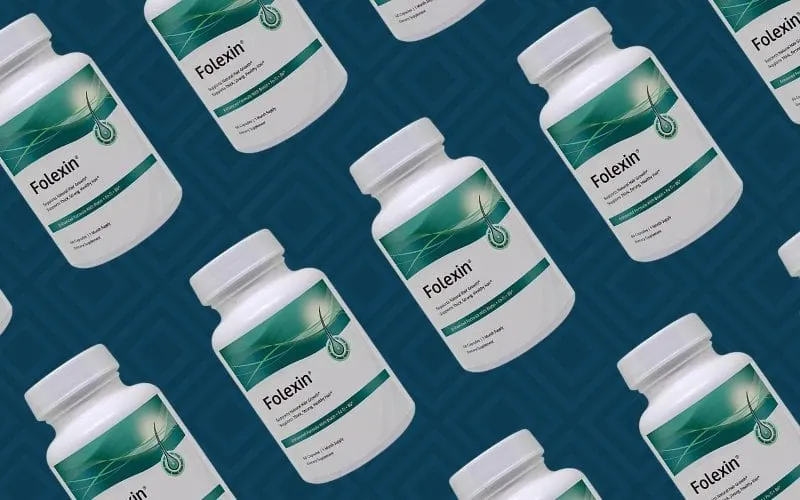
While it’s almost always better to obtain nutrients from whole food sources, the truth is that it can be hard to eat certain foods in high enough quantities. High-quality vitamin and mineral supplements are an excellent option to ensure that you get enough of certain targeted nutrients.
Some of the vitamins and minerals that are most crucial to hair growth include:
- Vitamin D: Vitamin D may help create new hair follicles, and low levels of Vitamin D are linked to hair loss.
- Folic Acid: Folic acid promotes healthy cell growth and is good for red blood cells, which can encourage hair growth.
- B Vitamins: B vitamins help create red blood cells, transporting nutrients and oxygen to the scalp. This keeps hair follicles healthy and encourages growth.
- Iron: Iron helps oxygenate the cells, including the scalp, and iron deficiency is linked to hair loss (especially in women).
- Vitamins C, E, and other antioxidants: Antioxidants prevent oxidative stress and keep the cells healthy.
- Zinc: Zinc is crucial for tissue growth and repair and helps stimulate oil glands around the hair follicles.
- Vitamin A: Vitamin A promotes cell growth, including hair, and encourages sebum production. This keeps the scalp moisturized and hair healthy.
A quick, easy, and inexpensive way to get most of these vitamins and minerals in one tablet is to take good-quality prenatal vitamins. Almost all prenatal vitamins are high in folic acid, iron, and many other vitamins that promote cell growth. You don’t have to be pregnant to purchase or take prenatal vitamins.
Or, you can choose a supplement that’s rich in vitamins and minerals to help you hair grow in thicker. Our favorite it Folexin, which has been around for many years and is loved by users.
Step 2: Care for Your Scalp Properly
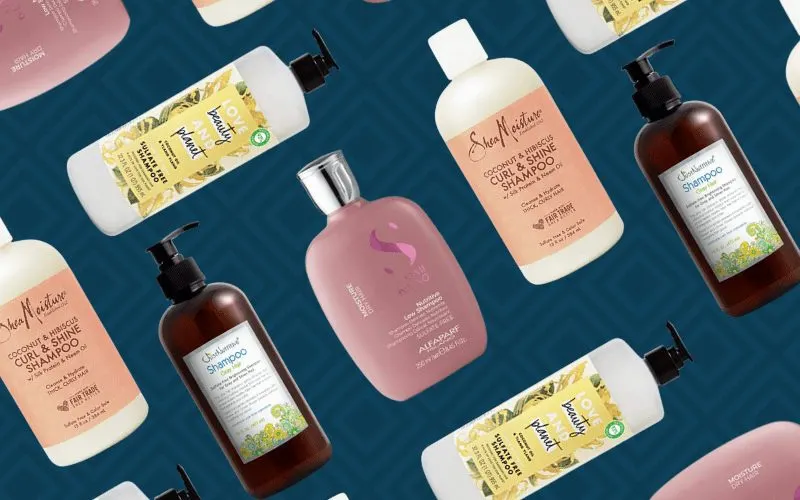
As we explained above, your hair is dead – but your scalp most definitely isn’t. The scalp and hair follicles are what produce hair and the sebum that conditions the hair.
This means that if you want your hair to look thick and healthy, you need to make sure that your scalp is healthy and strong. After all, your scalp is skin. So you need to care for it much the same way you care for other skin. This means consistently cleansing it of old oil, dirt, debris, and product residue so that the pores stay unclogged and productive.
As you already know, the way to do this is to shampoo regularly, but not more often than you need to. If you shampoo too often, you can strip your scalp of its natural oils, which can, conversely, leave you will dull, oily hair. Say what? Yes, frequent shampooing strips your scalp of its natural, protective oils, which can cause your oil glands to work overtime to make up for the loss.
Neither dry nor oil scalp is conducive to healthy, thick hair! When you wash your hair and scalp, be sure to use a gentle shampoo appropriate for your skin and hair type. Stay away from products that contain alcohols, sulfates, or artificial colors or fragrances.
Any or all of these can irritate your scalp. You may also want to exfoliate your scalp gently. You can do this with a scalp scrub or a dandruff shampoo that contains salicylic acid.
Step 3: Pick a Suitable Style and Keep Your Hair Trimmed
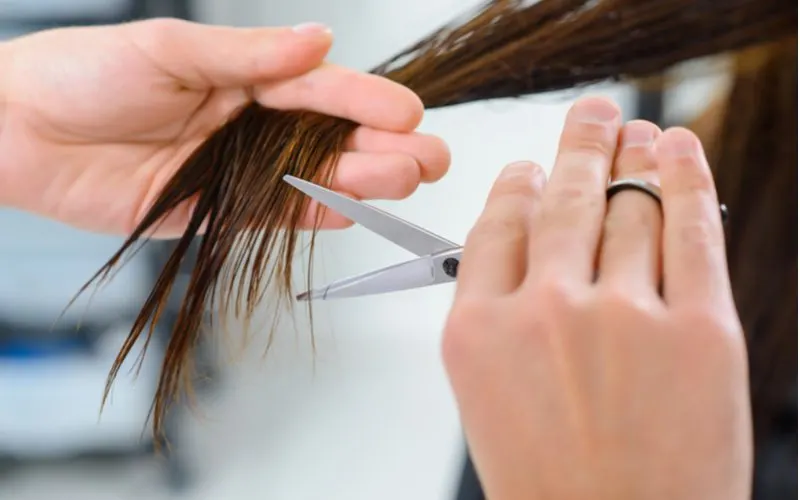
Dmytro Zinkevych/Shutterstock
For obvious reasons, hair that is heavily layered or feathered looks thinner. If you want your hair to be thicker, use layers sparingly. A blunt-cut bob for short hair or light layers (at most) on medium-length or longer hair will make the most of the hair you have.
This creates the illusion of thickness. You may not think that you will look as if you have more hair if you have it cut regularly, but the truth is that you very likely will. Damaged and split ends are thinner than the rest of your hair, which makes sense when you think about it. And when the tips of your hair look thin and ragged, the rest looks thin and unhealthy.
Having the damaged ends trimmed regularly will make your hair look thicker. Just ask your stylist. And there’s a bonus!! Removing the split and damaged ends also prevents them from splitting even further up the hair shaft, so your hair won’t only look thicker, it will actually be thicker.
Step 4: Try a Natural Hair Mask
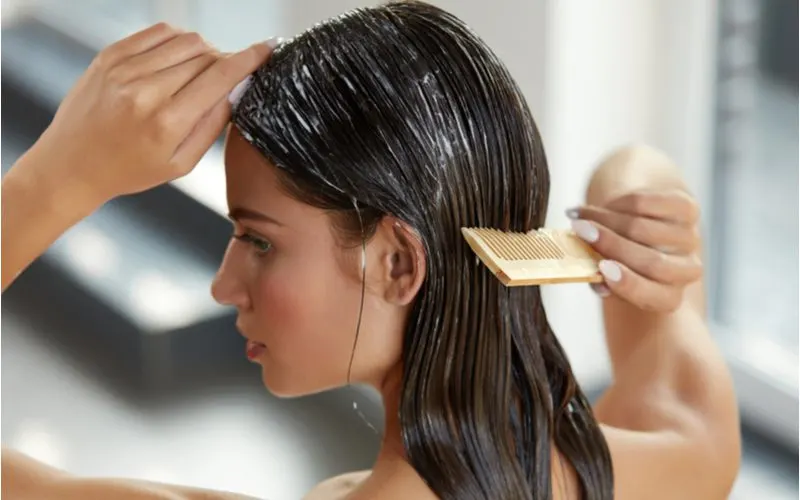
Puhhha/Shutterstock
Above, we showed you that eating certain foods can make your hair look thicker and healthier. It’s also possible to make your hair thicker by applying some of these ingredients directly to the hair in the form of a hair mask!
You can even create your own masks at home with ingredients found in your kitchen. Mix mashed ripe bananas and grapeseed oil. Let the mixture sit on your hair and scalp for about 20 minutes, then wash it out.
Grapeseed oil is full of fatty acids that make hair look thicker. Bananas contain potassium and B vitamins. This protects the hair shaft, therefore helping to prevent split ends. This hair mask will also stimulate blood flow to the scalp, contributing to hair growth and thickness.
Step 5: Minimize Heat Styling
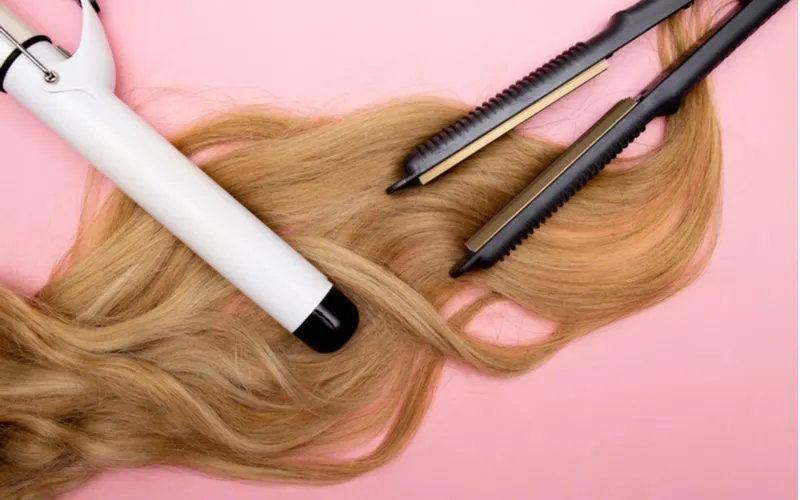
Evgeniya Sheydt/Shutterstock
If you use a blow-dryer, curling iron, or other heat styling tools, be sure to use a heat protectant spray and just enough heat to get the job done. Not only does heat damage hair, which makes it look stringy and thin, it also makes hair frizzy. It’s hard for frizzy hair to appear thick when it’s flying every which way instead of presenting in a nice glossy wedge.
If you blow-dry your hair, use a good-quality round brush to lift the hair and aim the blow dryer at the roots. This will give your hair a little lift and the illusion of thickness. You can add a texturizing product or sea salt spray to help the lift hold throughout the day.
Step 6: Brush Your Hair Frequently

Gpointstudio/Shutterstock
Frequent, thorough brushing helps exfoliate the scalp, removes loose strands of hair, and distributes the hair’s natural oils down to the ends. All of this makes your hair healthier and thicker. It also helps prevent breakage and tangles, in turn making your hair thicker.
Brush your hair at least twice a day for the best results. If your hair has a tendency to get tangled throughout the day, go ahead and brush it more frequently. The longer your hair sits in snarls, the harder it’ll be to untangle it and the greater the risk of damage.
Brushing too much isn’t healthy either, though. It’s probably best to just brush morning and night unless you have an unexpected need during the day.
You should also use a natural-bristle brush (a boar-bristle brush is best) if you can find one. Do not use a plastic brush. Plastic brushes are notorious for causing damage and creating frizz. Neither damaged nor frizzy hair looks thick and healthy. And never brush wet hair!
Step 7: Choose Styling Products Carefully
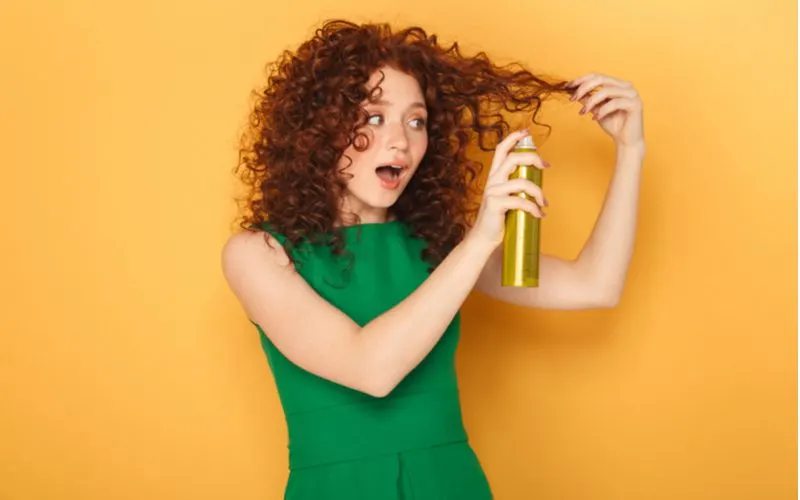
Dean Drobot/Shutterstock
If you have fine hair, the wrong products can weigh it down, making it look thin and limp instead of thick and healthy. You’ll want to use lightweight products that you can scrunch into the roots of your hair, and possibly a thickening texturizing spray to finish. For the ultimate hack, a fiber-based prep product will make your hair look thicker until it’s washed out.
Things to Consider
Most of us would love to have our hair look thicker and fuller, but the only way to make that happen permanently is to improve the health of the scalp and hair follicles.
- Your hair is healthy when you’re healthy, so try to manage any chronic conditions that may affect hair growth.
- Foods that promote circulation and cell growth also promote hair growth. Include them in a healthy diet, and consider supplementing as well.
- Taking care of your scalp also encourages hair growth. Your scalp is similar to the rest of your skin.
- Remember that your hair looks thicker when well cared for, so get regular trims to remove split and dead ends. Brush regularly and thoroughly with a high-quality brush.
So, How Do You Get Thicker Hair?
There you have it — how to get thicker hair. Once your hair becomes visible, it’s dead, and there isn’t much you can do to make it thicker. You need to focus on the scalp and follicles to make sure that the next generation of hair is thick, full, and healthy.
